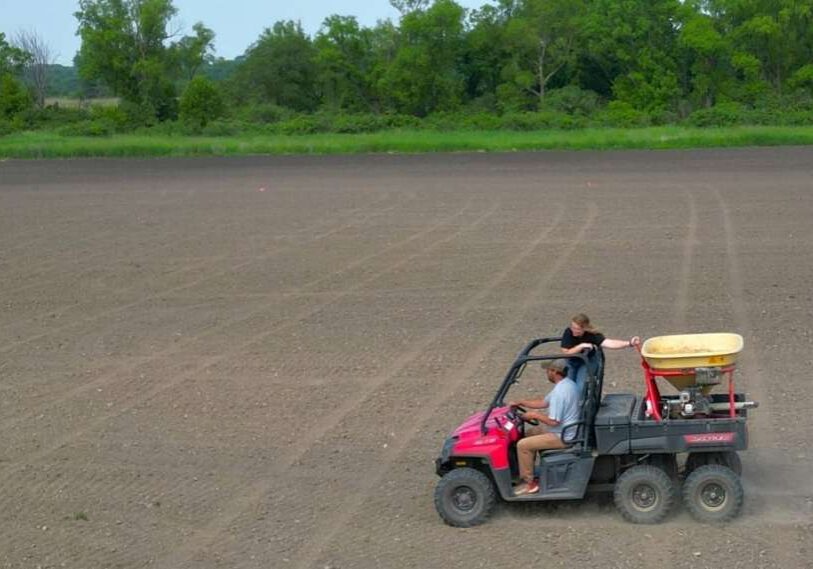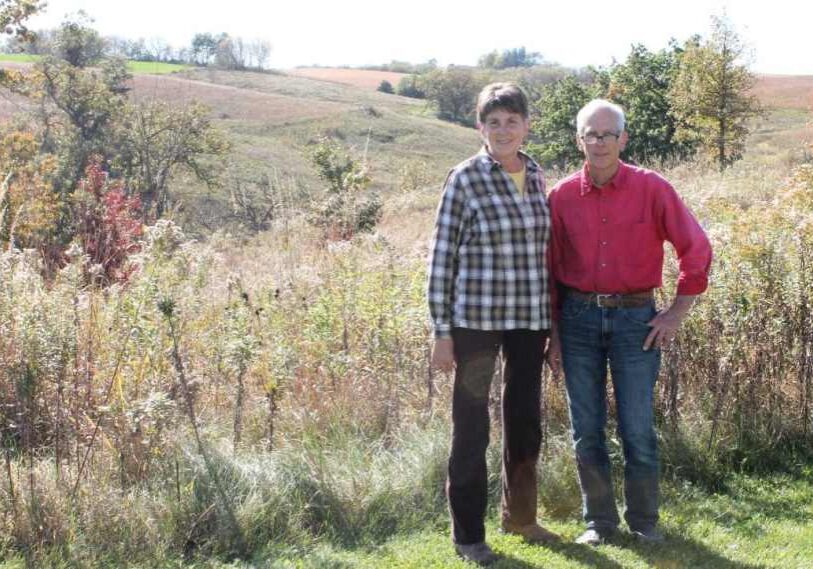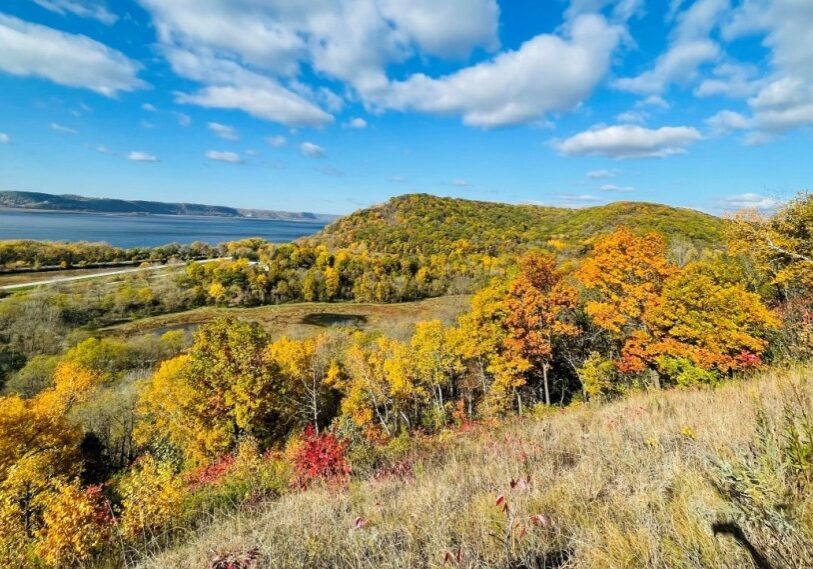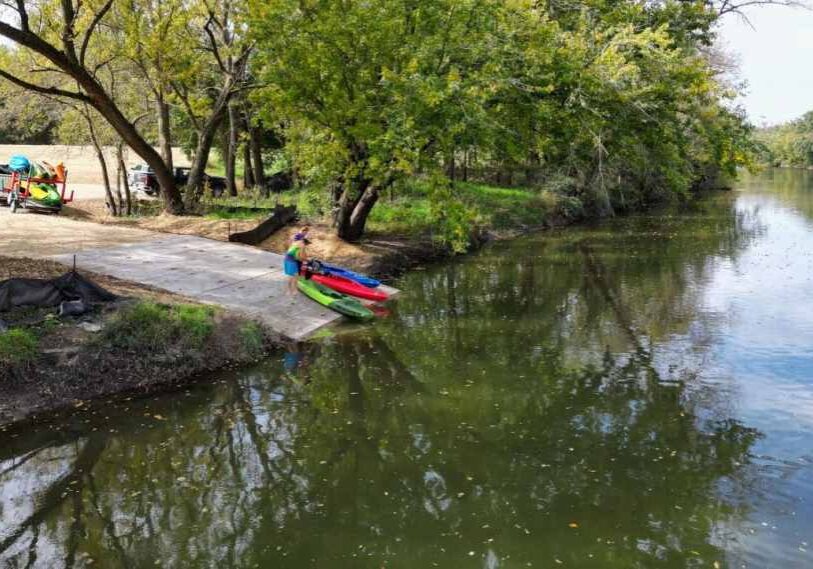From ski trails to hiking paths, heat is reshaping recreation and our attitudes
It’s not just our imagination – and it’s not just Southeast Minnesota’s story

EDITOR’S NOTE: If you listen carefully to how friends and neighbors talk about winter recreation, you’ll notice that just about every conversation begins with, “well, assuming we get any snow this year…” – and this isn’t the first year that’s been the case.
Near-normal temperatures and periods of rain mixed with snow are in the forecast for our region this week – “finally,” some would say.
Still, this fall is shaping up to be another “one of the warmest ever,” according to climate summaries from our local National Weather Service (NWS) office (La Crosse). And while that’s not necessarily how the winter will pan out, it’s not a good sign either – assuming you’re a winter recreationalist.
The NWS reports Southeast Minnesota temperatures, as measured at the Rochester International Airport, through the summer months averaged 1-2° above normal; September was over 3° warmer than average (tied for 10th warmest September on record); and in October, the average temperature was nearly 5° warmer than normal (14th warmest on record).
And if a single year isn’t telling enough, longer-term trends spell it out further: 5 of the 10 warmest Septembers have occurred in the past decade; 6 of the 15 warmest Octobers have occurred since 2007.

(Graphic courtesy of the National Weather Service)
As for November, we’ve been warmer than usual – with a few days topping out at nearly 20° above normal. And while temperatures are closer to normal this week, the outlooks through the end of the month suggest we will likely finish the month above normal.
As for December-January-February? The most recent outlook predicts there’s a slight chance temperatures will be at or slightly below normal. Will that translate into a better year this year for winter recreational activities? Only time will tell.
From our collaborators with the Mississippi River Basin Ag & Water Desk, we have this story by the nonprofit newsroom Floodlight, reminding us that the heat is taking its toll across many parts of the Upper Midwest, similar to what we’ve been experiencing across the greater Root River Valley.
UPPER MIDWEST—In south-central Wisconsin, near record warmth last January and two record-breaking summer heat waves have cross-country skiers nervous they won’t be getting much snow this winter – again.
And it’s not just skiers in Wisconsin who are worried. New research shows heat waves are prompting a growing number of Americans to make the connection between hotter weather and climate change.
Ski seasons in the United States have shrunk by an average of 5.5 to 7.1 days between 2000 and 2019 compared to the 1960s and ‘70s, according to a 2024 study by researchers from Canada and Austria. And in the coming 25 years, ski seasons could be even shorter – by between two weeks and three months – depending on how much the world reduces its greenhouse gas emissions, the researchers said.

A young ice fisherman shows off his catch in 2024; lakes in southern Wisconsin remain frozen about 75 days annually, according to the Center for Limnology at the University of Wisconsin, but a little more than a hundred years ago, they remained frozen 130 days a year. (Photo by Sharon Vanorny; Courtesy of Destination Madison)
Tamara Bryant, executive director of a cross-country ski club in Madison, Wis., has seen this dynamic firsthand – both in her professional and personal lives.
“I remember the winters where my son could build snow forts in the front yard, year after year, and we’re just not getting the same (amount of snow),” she said. “Having a white Christmas is not something we can totally rely on.”
Hilary Dugan, associate professor in the Center for Limnology at the University of Wisconsin-Madison, says back in the 1800s, lakes would remain frozen approximately 130 days a year, but now, on average, it’s maybe 75 days a year.
“That’s something that people around here notice, because winter is a big part of life,” Dugan said. “Traditionally, winter would start in December (and) it would end probably like April. That meant that you could consistently go out and ice fish, cross-country ski, you know, winter recreation.
“We’re talking months of change – not just a couple of days.”
Heat curbs desert hiking, too
The impact of warmer-than-usual temperatures isn’t restricted to Wisconsin, Minnesota and the Upper Midwest.
More than 1,700 miles away in Phoenix, dangerous heat has prompted officials to close the city’s extensive system of mountain trails. But that hasn’t stopped some from hiking in 100-degree-plus weather, leading to emergency rescues and the death of a 10-year-old last year.
The National Oceanic and Atmospheric Administration (NOAA) found 2024 was the hottest year in its 130-year climate record. NOAA reported the average annual temperature across the contiguous United States in 2024 was 55.5 degrees – or 3.5 degrees above the 20th-century average – heat that it said fueled a near-record number of tornadoes.
Hotter summers and warmer winters are not only disrupting outdoor activities. The record-breaking heat has also been driving national concern about climate change – more so even than dramatic events such as wildfires and hurricanes, according to new research.
Yale’s latest Climate Opinion Maps found that 65% of U.S. adults somewhat or strongly agree that global warming is affecting weather patterns, while 72% of adults nationally think global warming is real.

The city of Phoenix closes hiking trails during the hottest days in an attempt to keep people safe. In July, authorities rescued 11 hikers on South Mountain who had walked around trail-closed signs. That day, the temperature reached 114 degrees. (Photo by Andy Hall, Floodlight)
Its recent study showed that people’s interest in learning more about climate change consistently spikes during weather events like heat waves. And the public’s interest in climate change increases in specific areas experiencing extreme weather events, researchers found.
Research also affirms that heat is not just inconvenient – it’s deadly.
Climate Central’s analysis of heat streaks between 1970 to 2024 found that their frequency has at least doubled in nearly 200 cities nationwide.
The data, released in July by the nonprofit group of scientists and climate researchers, also found heat waves are the leading cause of weather-related deaths in the United States. In 2023, the group reported that 2,325 people in the United States died from extreme heat – a record high.
This heat, Phoenix Fire Department Capt. Rob McDade said, “It’s very dangerous.”
In 2021, Phoenix adopted a safety program to restrict access on parts of the city’s 200-plus miles of trails during extreme heat – especially on rugged stretches where it’s more difficult for the fire department to rescue hikers.
“We have more people hiking than ever, and we are seeing rescues that have to happen that definitely are related to the heat,” said Jarod Rogers, deputy director of the city’s Parks and Recreation Department.
Closer to home, warm weather hits winter sports
Rising temperatures are causing a different kind of risk in our northern regions. Last winter, according to UW’s Hilary Dugan, she repeatedly heard about people being rescued after falling through melting lake ice.
“It felt higher than normal,” she said. “People are willing to go out on the thinnest ice to go get some fish. It’s definitely a passion for people here.”
Skiers are also feeling the burn from a warmer climate. Across much of the Upper Midwest, there has been little snow in recent years, shortening the cross-country skiing season.
Annual snowfall in southern Wisconsin, for instance, has decreased over the past three winters from 70 accumulated inches in 2022, 43 inches in 2023 and 22 inches in 2024.
Popular ski races have had to cancel because of the lack of snowfall. Some event organizers have resorted to using artificially made snow.
In 2024, northern Wisconsin’s American Birkebeiner race organizers used snow-making machines to create a 10-kilometer ski loop instead of the normally linear 50- or 53-kilometer course.
“In the photos, you would see this little white ribbon of snow on the trail, and it was brown everywhere else,” according to one Wisconsin ski-enthusiast, calling the recent lack of snow “freaky.”

Lanesboro skiers Andy Batstone and Bonnie Handmacher, who have skied the American Birkebeiner in northern Wisconsin for years, were among those who experienced the 2024 loop created by snow-making machines. They, along with Birkie enthusiasts across the world, are hoping for better snow for the February 2026 race. (Photo courtesy of Bonnie Handmacher)
Birkie spokesman Shawn Connelly said the American Birkebeiner Ski Foundation has kept its ski events running thanks to donor funding to purchase the snow-making equipment. “As long as we have the cold, we’ll have the snow,” Connelly vowed, “and we’ll continue to host North America’s largest annual cross country ski race.”
Trump administration seeks to halt U.S. climate push
While the Yale study shows Americans are increasingly concerned about climate change, President Donald Trump’s administration is moving in the opposite direction.
Earlier this year, the U.S. Environmental Protection Agency proposed rescinding the 2009 Endangerment Finding which scientifically characterized planet-warming greenhouse gases as a danger to human health and the environment. The ruling was used as the foundation for the federal government’s regulation of emissions from vehicles and power plants for the last 16 years.
The proposal comes after the Trump administration gutted many of the initiatives of former President Joe Biden’s Inflation Reduction Act that aimed to reduce the country’s climate impact over the next two decades.
Environmental advocates have accused the Trump administration of “burying its head in sand” when it comes to the climate crisis.
“Americans are already suffering from stronger hurricanes, more severe heat waves and floods, and more frequent fires,” Fred Krupp, president of the Environmental Defense Fund, said in a prepared statement. “(Americans) are watching these climate disasters get worse, (and) the danger to their lives and health intensify.”

This story is a product of the Mississippi River Basin Ag & Water Desk, an independent reporting network based at the University of Missouri in partnership with Report for America, with major funding from the Walton Family Foundation.
Story edited for Root River Current by John Gaddo.





